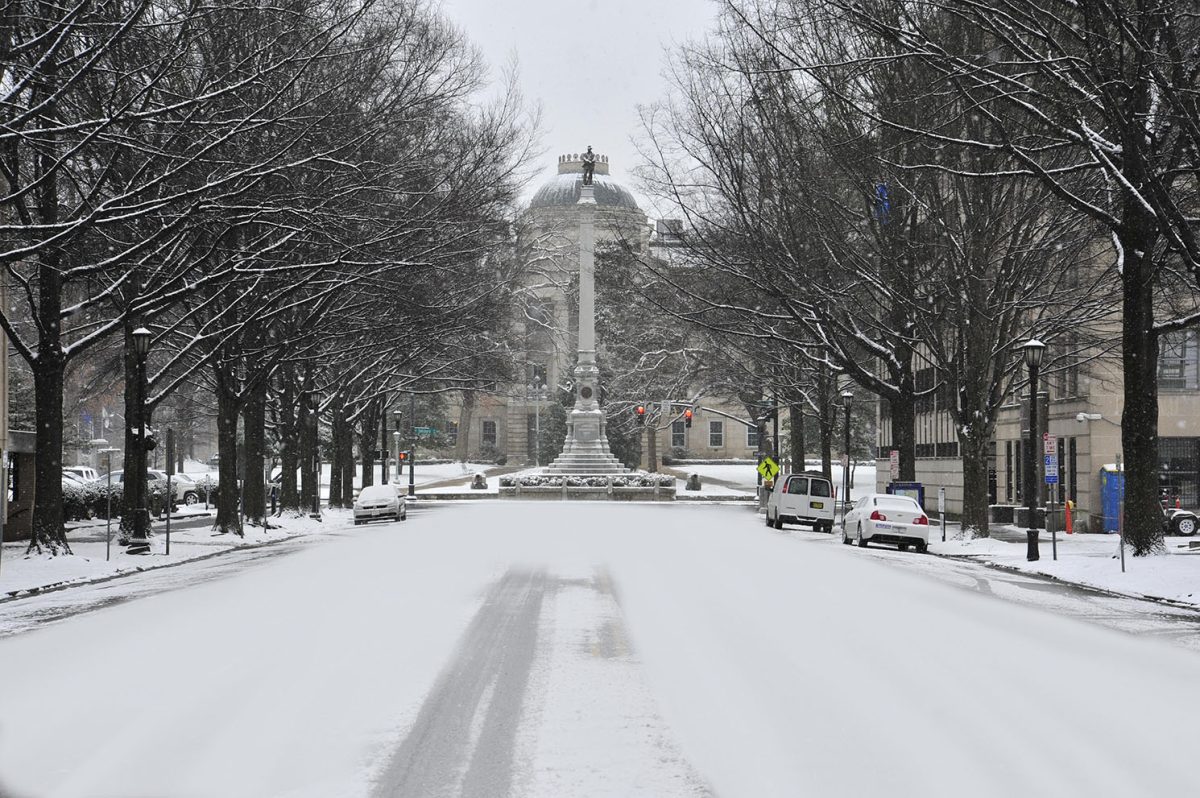North Carolina received rare snowfall during January, specifically on Jan. 10-11 and Jan. 21. The first snowfall was very light in Wake County, not even reaching an inch. However, many places reached one to nine inches of snow in Western North Carolina. At the time of this publication, we find ourselves again on the precipice of inclement weather.
Marion, NC reached approximately five inches of snow on Jan 10. The snow lasted around a week, although the snow still hasn’t fully melted in some places.
Sierra Clark, a Marion resident, got to experience this snow firsthand.
“The roads were closed for three days which led to schools being closed, [allowing] kids to enjoy the snow,” Clark said. “I saw snowmen around our neighborhood and snow angels.”
Some locations had power outages, but no major issues have happened.
Eastern North Carolina saw several inches of snow during the second snowfall, with Wilmington getting around five inches. While snow can be exciting for kids to play and get a day off school, it can also create anxiety regarding transportation. This was true for Meghan Tipple, a UNC Wilmington student, who was worried about driving.
“I didn’t leave my house because the roads were bad for so long,” Tipple said.
Not all North Carolina residents were shocked by this snow. Joseph Williams, an AP United States Government teacher, used to live in New York for 14 years. Used to the heavy New York snow, he wasn’t very impressed with the small amounts of North Carolina snow.
“It’s funny because I’m used to having two feet of snow and having a [school] delay,” Williams said. “I get it though because they don’t have the same infrastructure here to manage the snow as they do [in New York].”
The sudden snow could be an effect of climate change. Gerald Sarrells, an Earth Science teacher at Wakefield, explains why some areas received snow this year, when they typically don’t.
“There’s a fluctuation in the arctic jet stream to the north,” Sarrells said.
When the jet stream is strong, it stays near the Arctic, keeping cold air contained. When the jet stream weakens, the air will freely flow south, making regions colder than normal. Local geography is why snow sticks longer in some places than others. In the mountainous regions, the snow will stick for a longer period than in flatter areas. Local ecosystems are also affected by the snow because they are not properly adapted to snow.
“Homeostasis is thrown off by this weather,” Sarrells said. “You need balance.”










